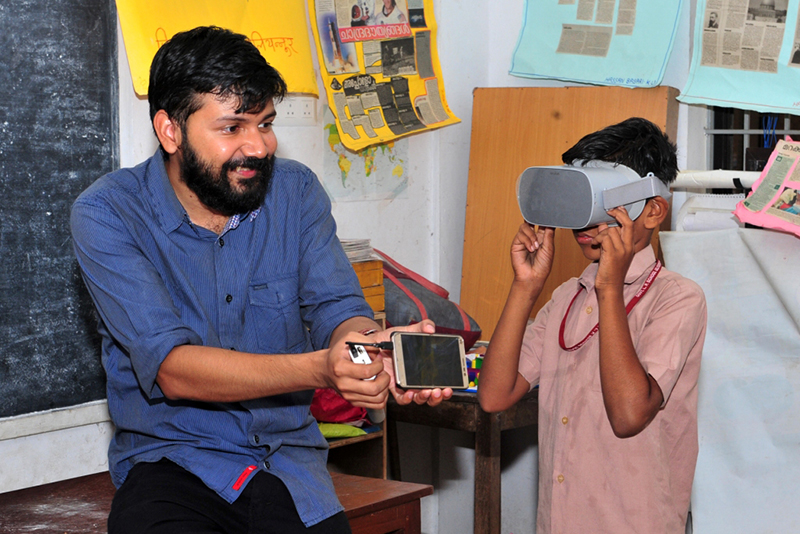Vimal Krishnan R




Grant Period: over one year and six months
Vimal Krishnan R is a research fellow at the Department of Design, Indian Institute of Technology, Hyderabad. He completed his Masters in Communication from Christ University, Bangalore. He has worked as an Assistant Professor in the Department of Visual Media and Communication at Amrita School of Arts and Sciences, Amrita Vishwa Vidyapeetham. His writings on film and media have been published by Cochin University, Amrita School of Arts and Sciences, Baselius Researcher, New Indian Express and Indian Association of Science Fiction Studies. He has presented his papers in various universities in the country. A researcher by profession, this is his first creative venture.
Fusing Legend and Locale: Reimagining Perumtachan’s Pond, Vimal Krishnan’s project is an effort to use virtual reality to interpret local legends. According to him spaces play an important role in legends. Almost every legend is linked to a geospatial location – some real like build structures or spaces and some mythical. The legend of Perumtachan’s temple pond in Kerala is an instance where a legend has a direct spatial connection to a location. The legend of master builder Perumtachan has been documented in Aitheehyamala, a collection of Malayali legends. According to the legend, Perumtachan, one of the twelve sons of ascetic Brahmin scholar Vararuchi and a Pariah woman, was abandoned at birth like his other siblings. All the siblings were adopted by people from different castes and the people of Kerala are descendants of them. Perumtachan became a master carpenter with supernatural skills. Once a temple commissioned him to build a temple pond but the trustees could not come to a consensus about the shape. Perumtachan solved the issue by building a pond that appears circular, square or triangular depending on the viewing angle. The pond is believed to have existed near the Mahadeva Temple of Uliyanoor in Aluva. The temple is still functional and a wonder of architecture but the pond remains elusive to the human eye.
Vimal wants to create an interactive, three dimensional Virtual Reality projection of the pond based on the legend near the actual temple. It will assume different shapes as the spectator walks around it. The simulated environment will be created after extensive research on the period and the spectator will be able to interact with it through a wearable virtual reality kit or a head mounted display unit. Colour, texture and dimensions of the pond and its environment will be constructed through data collected from archives, photographs, interviews and field visits. He will also visit other temples of Kerala to study kinetic and acoustic properties of temple ponds. Dimensions, scale and formal elements of the simulated environment will be determined by technical possibilities of the medium, terrain of the chosen site and budgetary restriction of the project.
Virtual Reality as a medium is increasingly being used in scientific explorations and mainstream entertainment. The artistic possibilities of it are still rarely explored. Through this project if Vimal can create a prototype to understand and explore legends, it can open doors for new artistic experiences and experiments. The installation will be in a school near the temple. While making a site specific installation this project aims to add a corporeal dimension to imagination, placing it in a school will locate a legend with deep religious links into a secular space. While the temple is accessible to only specific religious groups and castes, this artwork could be accessed by anyone and hence will challenge the religious indoctrination of the legend.
Vimal will arrange for the hi-tech gadgets with the support of his department at the IIT Hyderabad. Although he has had initial discussions with the temple and school authorities and they have approved his working with this space, there is always a risk in such projects of the authorities backing out at a later stage of the project. Vimal is from the same locality and has studied in the school. His familiarity with the community should work in his favour. However, if for some reasons it becomes impossible to create the installation at that site, Vimal has agreed that the grant would be terminated by IFA and he would return the funds.
The outcomes of the project will be the installation which will be made accessible through wearable Virtual Reality head mounted display units and a research paper which will address art and design communities. He will deposit photo and video documentations, sketches, 3D models and prototypes, source codes, design iterations of the installation and manuscript of the research paper at IFA. The project is ambitious in terms of budget, but it seems feasible with some external support.
